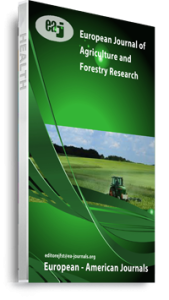The relationship between labile P sorbed to the soil surface and solution P can be described by a quantity-intensity relationship which shows P sorption or desorption as a function of P in the equilibrium solution. Twelve soils in Benue state representing Alfisols, Ultisols and Inceptisols were therefore used to examine the influence of soil properties on the shape and placement of their adsorption curves and yield of soybean. Sorption characteristics were determined in 0.01 M CaCl2 solutions of various P concentrations. For each soil, the amounts of P that gave 0.025, 0.05, 0.075, 0.100, 0.125, 0.150, 0.175, 0.200, 0.225, 0.250 mg kg-1 solution concentrations were estimated from adsorption curves. In the greenhouse, 4 kg of soil from each location was placed in plastic pots. Amount of P estimated from sorption study was added as KH2PO4. The treatments were laid out in Randomized Complete Block Design (RCBD) and soybean seed variety (TGx 1448-2E) was planted and growth and development observed to maturity. Optimum solution P concentration (SPC) was determined for each soil in relation to yield. At harvest, SPC that gave highest grain yield was evaluated for each soil and the quantity of P required (SPR) to achieve this concentration was calculated. Consequently, Odoba would require highest P fertilizer application (604.84 Kg P ha-1), (Tor-Donga 112.31, Abeda-Mbadyul 105.93) would require medium fertilization, (Utonkon 72.75, Katsina-Ala and Ofugo 67.64, Akoodo-Mbakor and Nor 61.26, Ogyoma 39.56, Otobi 33.18 and Abaji-Kpav 22.97 Kg P ha-1)would require low fertilization while Vanam (2.55 Kg P ha-1) would require the least.
Keywords: Phosphorus; Adsorption; Isotherms; Growth; Fertilizer; Soybean; Soils

